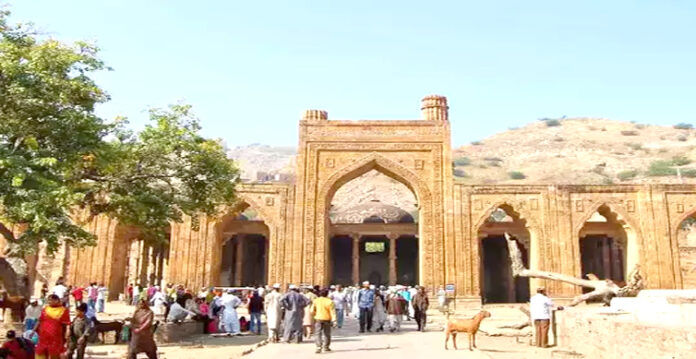Ajmer, Rajasthan—The recent decision of an Ajmer court to admit a petition seeking a survey of the Ajmer Sharif Dargah has reignited demands for a similar investigation into the historic Adhai Din Ka Jhonpra, one of India’s oldest mosques and a protected monument under the Archaeological Survey of India (ASI).
Adhai Din Ka Jhonpra, located within a short walking distance from the Ajmer Dargah, has been at the center of debates over its origins and historical significance. Ajmer’s deputy mayor, Neeraj Jain, has claimed the site was originally a Sanskrit college and a Jain temple, predating its conversion into a mosque during the 12th century.
“There has been evidence of a Sanskrit college and temple in the Jhonpra. It was demolished by invaders in the same way that Nalanda and Takshila were destroyed. This was an attack on our culture, our civilization, and our education,” Jain said in a statement. He also alleged that the ASI has recovered over 250 statues from the site and highlighted the presence of swastika symbols, bells, and Sanskrit shlokas that point to its ancient origins.
Also Read: Controversy Over Shiv Temple Claim at Ajmer Dargah, Court to Hear Case on December 20
According to the ASI, Adhai Din Ka Jhonpra derives its name from the two-and-a-half-day Urs celebration held by Sufi followers in memory of Panjaba Shah, a spiritual leader who migrated to Ajmer from Punjab. Har Bilas Sarda, in his 1911 book Ajmer: Historical and Descriptive, attributes the site’s name to this tradition, which began in the late 18th century.
Sarda’s writings trace the site’s origins to a Jain temple built in 660 AD by Seth Viramdeva Kala during the Jain festival of Panch Kalyan Mahotsava. However, the structure was allegedly destroyed in 1192 by Muhammad Ghori’s forces, with Qutubuddin Aibak overseeing its conversion into a mosque. The ASI notes that the mosque’s architecture—featuring intricately carved Kufic and Tughra inscriptions—reflects a blend of reused temple materials and Islamic design principles.
“The pillared prayer chamber is an architectural marvel, divided into nine octagonal compartments with two minarets on the central arch,” states an ASI report.
The site has long been a flashpoint for historical and cultural debates. In May 2024, Rajasthan Assembly Speaker Vasudev Devnani, who represents Ajmer North, called for an ASI survey of the site after a visit by Jain monks and members of the Vishwa Hindu Parishad (VHP). The delegation alleged that the site was originally a Jain temple and Sanskrit school, urging the ASI to investigate and restore its historical identity.
“Existing religious activities should be stopped, and the ASI must ensure the return of the college’s old glory,” demanded Deputy Mayor Neeraj Jain, echoing calls made by other leaders and activists.
The debate over Adhai Din Ka Jhonpra is part of a broader narrative surrounding historical monuments and their origins, often intersecting with political and religious ideologies. Critics argue that such demands risk polarizing communities, while supporters maintain that uncovering the truth about India’s historical sites is essential to preserving the country’s heritage.
The ASI, tasked with the preservation and documentation of heritage sites, has not yet commented on the renewed demands for a survey. Experts, however, caution against drawing conclusions without rigorous archaeological evidence. As the petition progresses in court, the issue is likely to garner significant attention, with implications not just for Ajmer but for similar historical sites across India.
(This story is sourced from a third-party syndicated feed. Raavi Media takes no responsibility or liability of any nature. Raavi Media management/ythisnews.com can alter or delete the content without notice for any reason.)


